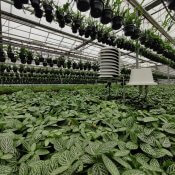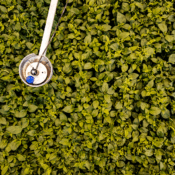VPDleaf: even more accurate insight into VPD
VPD is an important value because it can tell you how a plant is feeling. VPD stands for Vapour Pressure Difference. At 30MHz, we express this in VPDleaf. This visualization shows the data from our wireless sensors even more accurately, which provides better insight into the health of your crop.
What is VPDleaf?
VPDleaf is extremely reliable because the measurements are taken at micro level, all the way down to plant level. Using these measurements and an improved formula, a grower will have the most accurate data possible at his disposal. The improved formula – which leads to VPDleaf – is endorsed by WUR (Wageningen University & Research).
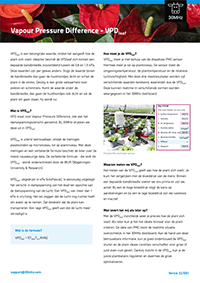
VPDleaf infosheet
How do you measure VPDleaf and how can you benefit as a grower? Leave your details and find the answers in the VPDleaf information in your inbox.
Why is VPD important in horticulture?
If the VPD is zero, plants can not transpire effectively. So the VPD is an important factor in creating an optimal growing environment. It can influence various key elements, which are connected to each other. As VPD increases:
- The uptake of CO2 decreases
- The increasing difference in vapor pressures between the leaf and the air causes the crop to evaporate
- VPD increase → transpiration increase → thirst! The plant needs to draw more water from its roots
- All this combined, leads to more stress. And that could lead to a weaker plant.
So VPD affects the plants loss of water (transpiration). Sometimes the air in a greenhouse gets too dry during the day. This can cause a plant to ‘turn off’. When the air is too dry, photosynthesis will stop to prevent the plant from exhausting. Photosynthesis is the process used by plants to convert sunlight, water and CO2 into oxygen and energy that is used for the growth. The crop will miss hours of daylight which leads to a decline in health. An optimum VPD can help in the prevention of mold and plant diseases.
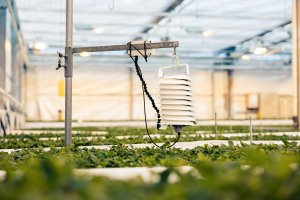
Pointed Microclimate Sensor: Measuring VPD in a greenhouse.
Research in tomato production in 2017 showed that VPD regulation efficiently moderated plant water stress and maintained the plants water balance. The researchers concluded that when you regulate the VPD, you’ll be more efficient with irrigation.
Pointed Micro Climate sensor
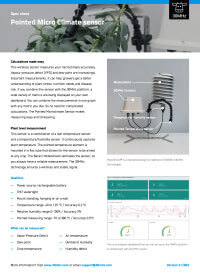
This sensor uses leaf temperature and temperature humidity measurements to continuously capture microclimate at close range. Use data from the sensor to better determine heating needs, cutting unnecessary energy expenditures and lowering the risk of plant fungus and disease.
A lot of our customers use this sensor for measuring VPD and dew point.


30MHz is typing… Our extended support team is ready to chat!
At 30MHz we think it’s important that our users can use our platform in an optimal way. At times you may have questions and you would like some help from our support team. Email and our support page filled with helpful articles were your go to’s. But we thought it was time for something extra… ...Read more
New 30MHz connect casing: How we protect your tech
To make sure your dataflow is fully protected, 30MHz introduces a new connect casing: waterproof, dust proof and even resistant to hits. This special shield will last longer and ensure a reliable dataflow from the connected sensor. What does that full protection mean? That’s what we will explain in this article. Watertight: resistant to wetness ...Read more
Most popular sensors for your greenhouse
As a grower, you know that optimal crop development starts with precise monitoring of your cultivation environment. But how do you transform raw data into actionable insights for your crops? This is where our wireless sensors and the 30MHz platform come together. Our sensors measure essential variables such as VPD, dew point, moisture deficit, EC, ...Read more

